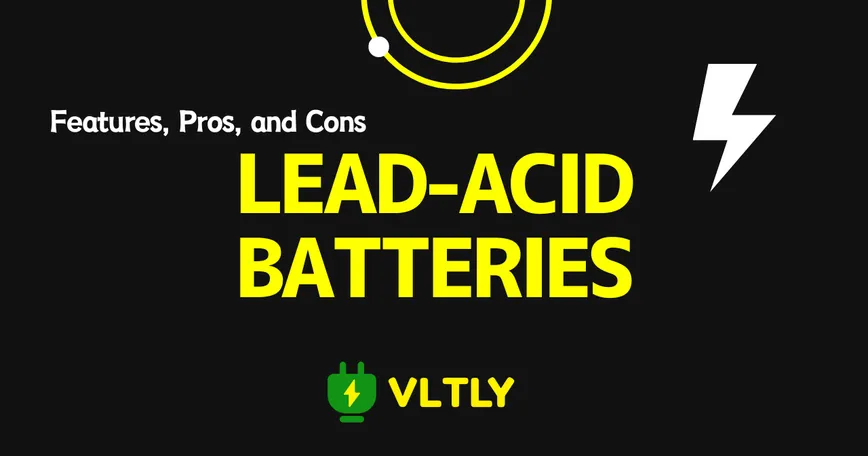
Features, Pros, and Cons of Lead-Acid Batteries
This article explains the features, pros, and cons of lead-acid batteries, one of the most historically significant and widely used types of batteries.
Posted at: 2024.7.25
What is a Lead-Acid Battery?
A lead-acid battery is a type of secondary battery that uses lead as its main material. It is one of the oldest battery technologies still in use today and is widely utilized in various fields, including automotive and industrial applications.
Basic Structure of a Lead-Acid Battery
A lead-acid battery primarily consists of the following components:
- Positive Plate: Lead dioxide (PbO₂)
- Negative Plate: Lead (Pb)
- Electrolyte: Dilute sulfuric acid (H₂SO₄)
The operating principle involves the reaction of lead dioxide and lead with sulfuric acid during discharge to produce lead sulfate (PbSO₄) and generate current. During charging, the lead sulfate reverts to lead dioxide and lead, increasing the sulfuric acid concentration in the electrolyte.
Characteristics of Lead-Acid Batteries
Lead-acid batteries are known for their high output and maintenance-free nature.
These characteristics make them suitable for use as car starter batteries and backup power sources for emergency systems and communication devices.
Advantages of Lead-Acid Batteries
Low Cost
Lead-acid batteries are less expensive to manufacture compared to other battery technologies, leading to lower initial investment costs.
They can be used over long periods and are relatively easy to maintain, resulting in high overall cost performance.
Reliability and Durability
The widespread use of lead-acid batteries in automobiles demonstrates their long history and proven reliability and durability.
Since they are used in cars, they are designed to withstand extreme temperature changes and shocks, making them reliable even in harsh conditions.
Disadvantages
Weight and Size
Lead-acid batteries are heavy and bulky, which limits their portability and installation options. Their size and weight make them unsuitable for portable devices and applications with limited space.
Low Energy Density
The energy density of lead-acid batteries is lower than that of lithium-ion batteries. This means that to achieve the same capacity, larger and heavier batteries are required. Therefore, they are not suitable for applications requiring high energy density, such as mobile devices and electric vehicles.
Due to these drawbacks, lead-acid batteries are rarely used in portable power sources. However, in environments where size does not matter, such as DIY off-grid systems at home, some people opt for lead-acid batteries because of their cost advantages.